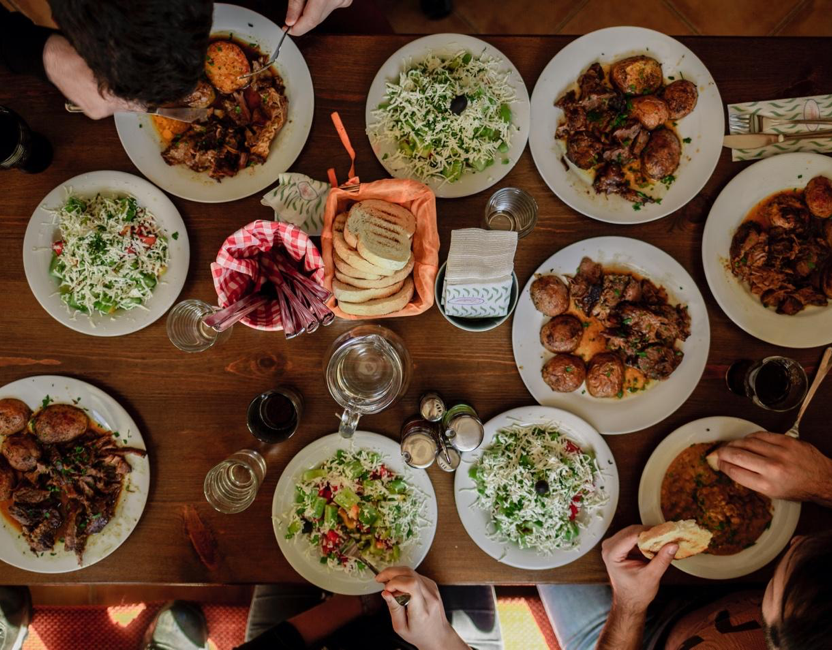Fasting: All you need to know to get started

Before you jump into the article, sign up to receive your free fasting guide below!
Fasting:
“The willing abstinence or reduction of some or all food, drink, or both, for a period of time.”[/blockquote]
Do you want to…
- Improve body composition
- Accelerate ketosis
- Improve cognition
- Elevate energy levels
- Improve heart health
- Improve brain health
- Regulate appetite
- Improve gut health
- Improve self-control & will power?
It is likely that you answered ‘yes’ to the questions above. And, the incredible thing is, this is all totally achievable. Not only is it achievable, but it is also free and requires very little time and energy. You can experience all of the above, and more by implementing this simple biohack into your lifestyle: fasting.
Are you experimenting with fasting? Perhaps you are following the keto diet and want to enhance the benefits somewhat. Fasting is undoubtedly one of the most useful tools on the keto diet as it can help you to: get into ketosis faster, burn more fat, activate stem cells, upregulate longevity genes, increase autophagy and increase growth hormone. And these are only a few of the benefits fasting provides! For these very reasons, I aim to do a couple of extended fasts throughout the year.
Although I practice intermittent fasting daily and do some 24-hour fasts quite frequently, there are certain benefits that are further enhanced by extended fasts, i.e. longer than 24 hours. Amongst all of the benefits, the ability of fasting to help you to regain control of your eating habits is probably the best one! You no longer feel like food controls you. You make the decisions, and food becomes a means to nourish and fuel your body. With this humble biohack, you can reconceptualize your relationship with food completely!
You may be thinking that this whole fasting thing sounds difficult and slightly crazy! Well, it helps to remember the difference between starvation and fasting. They are very different. Fasting is deliberate and voluntary; starvation is forced upon and happens without control. Your body is starving when it is deprived of nutrients, but when you are fasting, your body creates those nutrients from endogenous fuel supplies in a controlled and efficient way. The body prevents starvation by entering a state of nutritional ketosis – a state where you use fat for energy and you actually feel amazing!
What actually happens in your body during a fast? The diagram below gives a brief outline of what happened at various stages during a fast. This may help you gauge your progress, and as you will see, your energy levels and mood get progressively better!

Key definitions:
Growth Hormone – the major anabolic hormone of the body that promotes longevity and leanness; it is responsible for muscle maintenance or gain during fasting.
Glycogen depletion – the point at which all stored carbohydrates, in the liver and muscle tissue is completely used up.
Autophagy – the process of cleaning out old and damaged cells and proteins; basically, a cellular clean-up.
Stem cell production – stem cells are cells that have the ability to repair damaged cells or develop new cells in your body.
Immune system renewal – your immune cells are continuously renewing, at this point, you have replenished circulating immune cells.
[divider height=”30″ style=”default” line=”default” themecolor=”1″]
Choosing the Right Type of Fasting
Before you dive into the fast, do a little research and pick a strategy that suits you. Let’s take a brief look at the different types of fasting approaches.
1. Intermittent Fasting (IF)
Although this is not a type of extended fast, if you have never fasted before, this may be the perfect place for you to begin. Simply put, each day you spend a period of time eating and a period of time fasting. The most common type is the 16/8 method which involves fasting for 16 hours and eating within an 8-hour window.
Here you’ll get mild autophagy, increased fat burning, and elevated energy levels. Although these shorter fasts won’t necessarily have the same magnitude of effects as extended fasts, they will help your body get used to tapping into its energy reserves and start getting some of the major benefits. Also, exercise will be more welcomed in this type of fasting.
Level: Beginner
2. Caloric Liquid Fast
This type of fasting includes some calories, but still allows you to reap the benefits of fasting, simply because the liquids consumed are low-calorie and zero-sugar, and typically higher in fat. Typical examples include bone broth, green juice or non-caloric beverages like black coffee or tea.
This can be done for 24 hours or more, but the most common is 3-5 days. Having these low-calorie liquids can be great for your gut, but still keep your blood sugar stable and insulin levels low. If you’re doing juices or smoothies, ensure they are extremely low sugar – leafy green vegetables, water, and avocados are good options.
Level: Intermediate – Advanced
3. Non-caloric Liquid Fast
Slightly more challenging, this fast includes only non-caloric liquids like black coffee or tea, but some people just stick to water only. This type of fast really ramps up the autophagy process, because any calories tend to slow down autophagy.
This type of fast should only be done if you’re experienced and are in healthy condition. Usually, a non-caloric liquid fast is done from 24 hours and up to 5 days. Because you’re consuming no calories, it is especially important to replenish with electrolytes. Make sure you have a zero-calorie electrolyte mix for this (check out my supplement recommendations in the manual for formulations I recommend).
Level: Advanced
4. Dry Fast
Lastly, the most extreme form of fasting is dry fasting which means consuming absolutely nothing – no water, no coffee, nothing. Usually done for religious or spiritual reasons, and to amplify the fasting effects to achieve some sort of psychological benefit.
This should only be done under medical supervision and if your goals and intentions as an experienced ‘faster’ are clear and set out.
Level: Advanced
[idea]With fasting, there are no restrictions on what you can and can’t eat during the eating window. But, a low carb, ketogenic approach will significantly boost your results, whilst focusing on high-quality fats and proteins.[/idea]
[divider height=”30″ style=”default” line=”default” themecolor=”1″]
Important: Should you have any pre-existing medical conditions or a history of any eating disorders, please consult your medical doctor before starting any sort of fasting protocol. Fasting can be a significant stress on the body, and so making sure you’re ready for it, mentally and physically, is very important.
Share
Who is Shawn Wells?
Although I’ve suffered from countless issues, including chronic pain, auto-immunity, and depression, those are the very struggles that have led me to becoming a biochemist, formulation scientist, dietitian, and sports nutritionist who is now thriving. My personal experiences, experiments, and trials also have a much deeper purpose: To serve you, educate you, and ultimately help you optimize your health and longevity, reduce pain, and live your best life.
ORDER THE ENERGY FORMULA
Discover the 6 foundational pillars to cultivate a more caring, compassionate, connected, unified and purpose-filled life.


